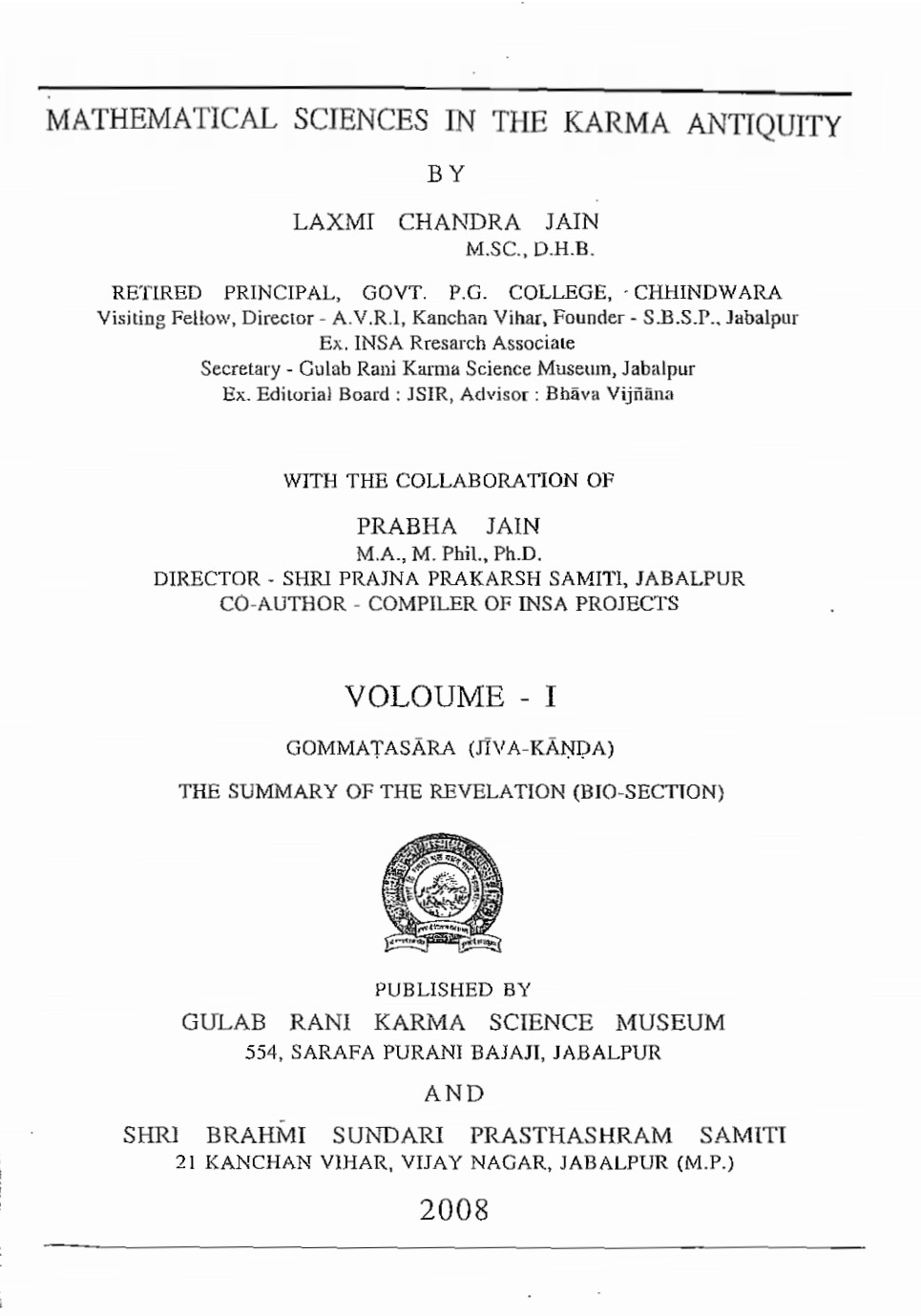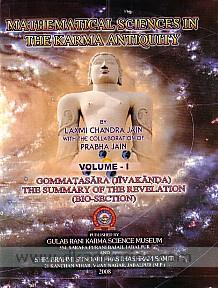| Professor Laxmi Chandra JAIN’s pioneering work on the mathematical content of classical Jaina karman theoretical texts deals exclusively with the mathematically refined forms of what he calls the ‘karma system theoretical approach’ or the biocybernetic system functionalism’ of the mathematical passages in the Digambara commentaries on the Ṣaṭkhaṇḍāgama and the Kaṣāyapāhuḍa. What a unit of karman pudgala actually represents, how karmic matter (a uniquely Jaina conception) is formed, and how Karman Theory B relates to Karman Theory A does not concern these texts. Hence, the term karman is used in a special sense in the present volume, which applies the language of modern biocybernetic system theory to the karman theory of Nemicandra: ‘”Karma” has been translated as “functional” and it has a mathematical significance of two meanings: as a transformation and as an operator with lapse over time’ (L.C. JAIN, infra, p. 16/26). - Dr. Peter Flügel (SOAS) |
| Title: | Mathematical Sciences in the Karma Antiquity |
| Author: | L.C. Jain with the collaboration of Prabha Jain |
| 1. Edition: | 2008 |
| Language: | English |
Publisher: | Jabalpur: Gulab Rani Karma Science Museum: Shri Brahmi Sundari Prasthashram Samiti |
Mathematical Sciences in the Karma Antiquity
Author:
 Prof. Laxmi Chandra Jain
Prof. Laxmi Chandra Jain
 Prof. Laxmi Chandra Jain
Prof. Laxmi Chandra Jain
Published: 12.05.2016
Updated: 13.05.2016
Updated: 13.05.2016
References
References are pages on which this term or individual has been marked. Select the list of references sorted by 'latest' (found on a page), 'alphabetical' or 'most used' (most frequent occurrence on a page).
Sources

Page glossary
Some texts contain footnotes and glossary entries. To distinguish between them, the links have different colors.
Page statistics
This page has been viewed 909 times.
